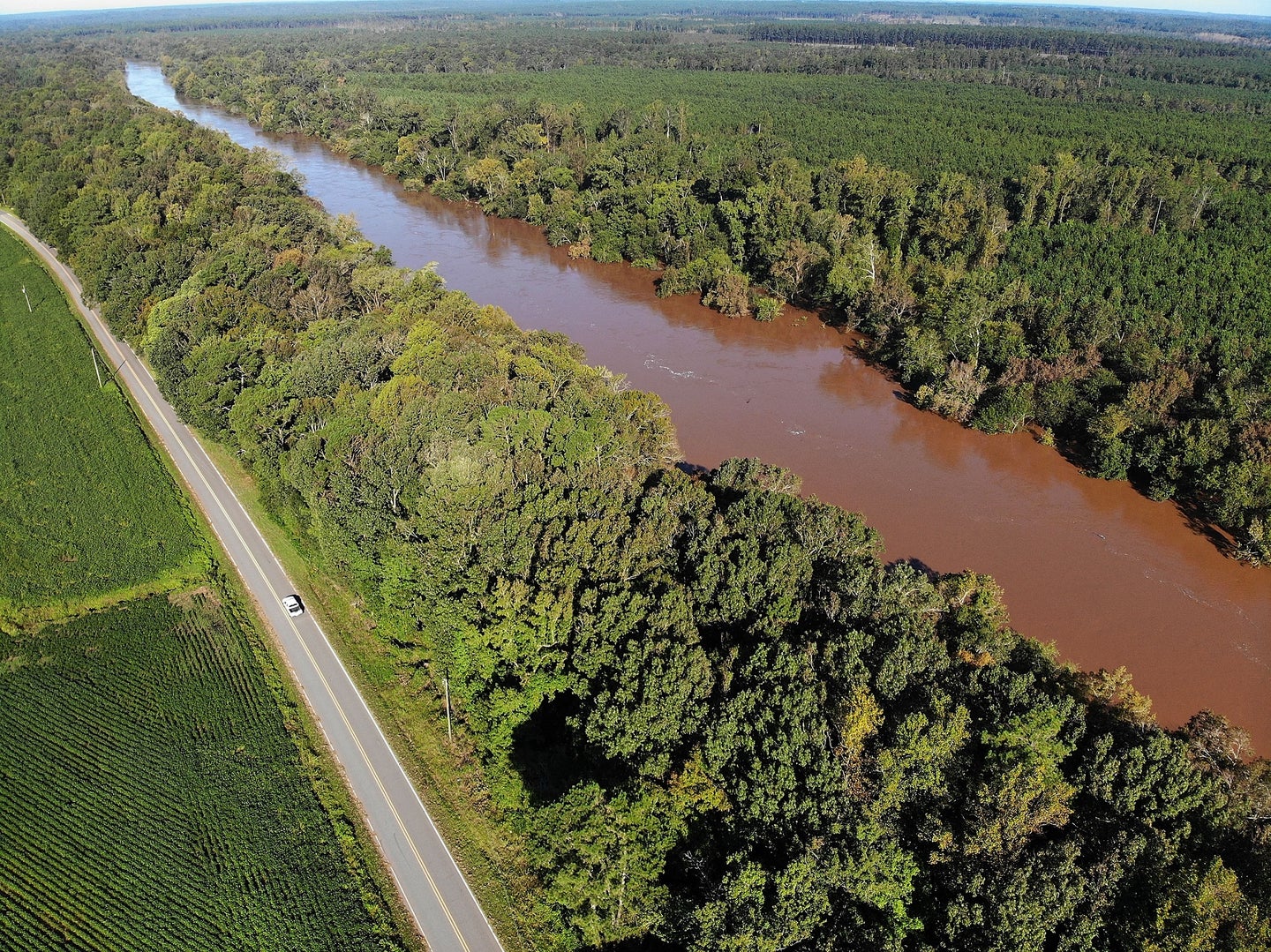8 new types of ‘forever chemicals’ found in river linked to US cancer cluster
People living by the Cape Fear River have been plagued by PFAS pollution for years. Now, the problem looks even more drastic.

In 2017 news broke in North Carolina that the water downstream of the Fayetteville Works Plant, owned by the Chemours Company (a spin-off of DuPont), and public water systems reliant on the Cape Fear River contained high levels of per-and poly-fluoroalkyl substances (PFAS). These contaminants, which are common in everyday products like adhesives, food packaging, and cookware, are dubbed “forever chemicals” because they don’t break down easily in the environment and can linger in the body while causing numerous health problems. And indeed, in the years after the positive PFAS tests, evidence emerged on suspected thyroid cancer clusters in local communities.
The Cape Fear River remains tainted to this day, and many of the residents of southeast North Carolina feel its presence in their lives. “We have a lot of pockets of strange illnesses,” says Dana Sargent, executive director of the nonprofit advocacy group Cape Fear River Watch. She notes that people in the area still buy bottled water and are anxious about the pervasive pollution.
[Related: 2 ways of knowing if there are PFAS in your drinking water]
Chemours has been sued multiple times for dumping chemicals in public waterways. But scientists and environmental groups are still investigating the extent of the contamination. In recent research using novel chemical-analysis tools published in the journal Science Advances, scientists from the University of North Carolina at Chapel Hill and North Carolina State University found 11 types of PFAS in the Cape Fear River that were previously undetected in those waters. Even worse, eight of those 11 compounds had never been reported to the Environmental Protection Agency (EPA), marking them as new forever chemicals. While it’s incredibly difficult to detect and identify toxins scientists aren’t aware, the study authors says this is a crucial step to studying and regulating PFAS that are still under the radar.
“The goals with this project were twofold,” says Kaylie Kirkwood-Donelson, one of the main contributors on the paper. Kirkwood-Donelson, now a chemist at the National Institute of Environmental Health Sciences, was a graduate student and research assistant at North Carolina State University while conducting this work. “One was to work on a method we could use to identify new PFAS and get more information about their chemical structures than we’d typically get. The second was to apply that method.”
To identify the previously undocumented chemicals, the team established four points of testing. The first three were pretty standard—they assessed each chemical’s mass, size, and polarity. Kirkwood-Donelson then used a relatively novel technique: ion mobility spectrometry, a method that reveals electric activity in the target molecule to help narrow down and pinpoint what you’re looking at. The process was fruitful. In total, she and her colleagues found 47 different forever chemicals in the Cape Fear River, including eight that weren’t already on the EPA’s “CompTox PFAS Master List,” which already covers some 14,000 compounds.
Despite decades of monitoring, PFAS can be challenging to catalog. To validate the ID, you’re supposed to check that your analyses match those of a “standard” sample of the substance that you either purchase or synthesize, says Erin Baker, an associate professor of chemistry at the University of North Carolina at Chapel Hill and an author on the new study. But standard samples don’t exist for most PFAS yet, and many are too difficult or expensive to synthesize in labs. Creative techniques give researchers more power to identify the mysterious characteristics of these chemicals, Baker says.
The ion mobility spectrometry method the team used “is an amazing method,” says EPA chemist Mark Strynar. “I think it’s the wave of the future.” While the agency has its own process for identifying new PFAS, he adds that it won’t be long before experts start asking, “why isn’t everyone doing this?” He just acquired the equipment needed for ion mobility spectrometry tests in his own lab last week.
[Related: The US might finally regulate toxic ‘forever chemicals’ in drinking water]
When investigating chemicals as toxic pollutants, the EPA typically assesses them as individual molecules, not classes of chemicals as a whole. It also won’t work toward stronger regulations or a ban until the chemical has proven to be damaging in some way. “We’re hoping that by introducing these new technologies we can speed up the discovery of novel PFAS,” Baker says. But right now, completing the process and validating groundbreaking findings can take an incredibly long time, during which potential toxins remains in the water. “That’s a huge barrier,” says Kirkwood-Donelson. Her Cape Fear research, for example, took six years to finalize.
On the bright side, now that these new kinds of PFAS have been detected, “other researchers will use this information to see if these chemicals exist across the US and across the world,” Kirkwood-Donelson says. If they’re widespread, toxicologists can begin to assess potential adverse effects.
Sargent, from Cape Fear River Watch, hopes the EPA will make strong and swift rules limiting PFAS use, starting with the Fayetteville Works Plant. But a recent letter from the agency shows that it authorized Chemours to import up to 4 million pounds of waste material containing the PFAS GenX from the company’s Netherlands facility to North Carolina. GenX has been at the center of several cancer and other health studies.
What’s frustrating is that instead of taking action to reduce PFAS in the environment, the EPA is “actually now just doing the exact opposite, which is huge,” says Sargent. “This issue is not going away,” she adds, and “we need to pay attention.”
